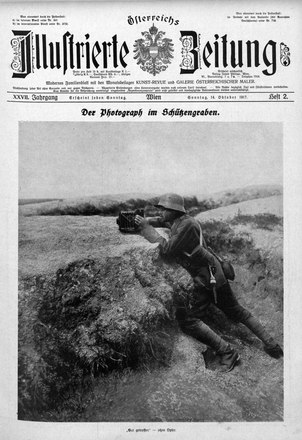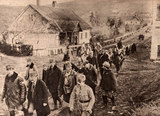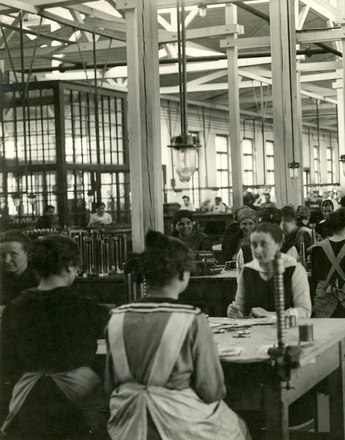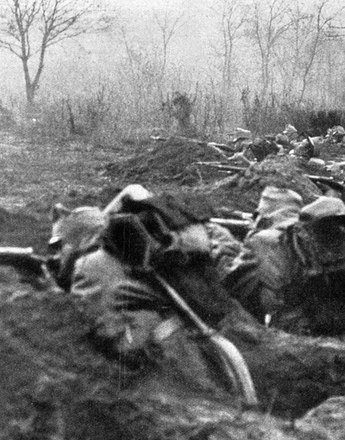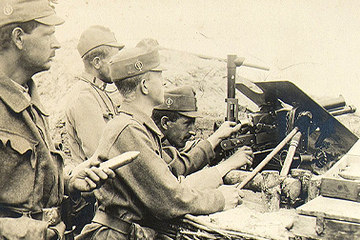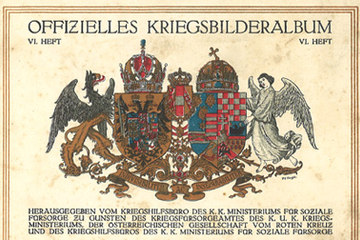"Embedded photography": war photographers as part of military logistics
In the wars of the 19th century, the considerable effort involved in taking photographs meant that photographers were only able to observe the action from the margins. The photographers at the front in the First World War, on the other hand, were a fixed part of the military groups.
At the beginning of the war, front photographers were primarily deployed by the army leadership for military purposes. Their photos served as a technical aid for directing weapons, were used for military reconnaissance and were meant to support the artillery. It was only secondarily that the press was provided with impressions of the front for propaganda purposes, although this aspect became increasingly significant as the war progressed.
The system of accrediting only a few official front photographers ensured that the War Press Headquarters maintained its control over the visual media coverage of the war. The first photo reporters were recruited from the Imperial and Royal Military Geographical Institute in Vienna, and were soon joined by professional and press photographers. The first group mainly took survey and reconnaissance photos, and were responsible for documenting the battle zones. The press photographers recruited by the War Press Headquarters and under its command as members of the Art Group supplied photos that could be used for propaganda purposes.
The official war photographers worked with heavy plate cameras on tripods, using 13 x 18 or 9 x 12 cm gelatin dry plates as negatives. The equipment was expensive and bulky, and for this reason some of them carried additional lighter roll film cameras. Military administration courier services organised the supply of plates and films.
The fact that the photographers were tied to the army was reflected thematically in the world of images of the official war photographers. They were reliant on military logistics, used the army's main traffic routes and took photographs along the supply routes. Because of their heavy equipment, they found it difficult to leave the army's network of paths and primarily photographed military locations.
At the same time, the presence of the photographers and cameramen had an effect on the situation at the front: soldiers posed in front of the lens, held fake battles and staged the war in accordance with modern pictorial aesthetics. The result was a whole series of photographs that recorded staged military processes and exercises but which were presented in the press as illustrations of actual battles, putting them in an entirely new narrative context. The documentary objective of the official photographers took second place to propaganda.
Translation: David Wright
Holzer, Anton: Die andere Front. Fotografie und Propaganda im Ersten Weltkrieg, Darmstadt 2007
Holzer, Anton: „Üb Aug‘ und Hand fürs Vaterland!“ Österreichische Kriegsfotografie im Ersten Weltkrieg, in: Fuchs, Martina u.a. (Hrsg.): Geschichte in Bildern? Wiener Zeitschrift zur Geschichte der Neuzeit (2006), 2, 87-98
Holzer, Anton (Hrsg.): Mit der Kamera bewaffnet. Krieg und Fotografie, Marburg 2003
Paul, Gerhard: Bilder des Krieges – Krieg der Bilder. Die Visualisierung des modernen Krieges, München 2004
-
Chapters
- Public relations in the First World War: the state organisation for war reporting
- The WPH Photograph Office
- "Embedded photography": war photographers as part of military logistics
- Photography as a weapon: reconnaissance, surveying, documentation
- Who photographed the war? Snapshooters, amateurs, front tourists
- The canon of images of the First World War as reflected in the illustrated press
- The photographer as documentarian: the amateur's eye
- World War photography between traditional pictorial conventions and the Modern

